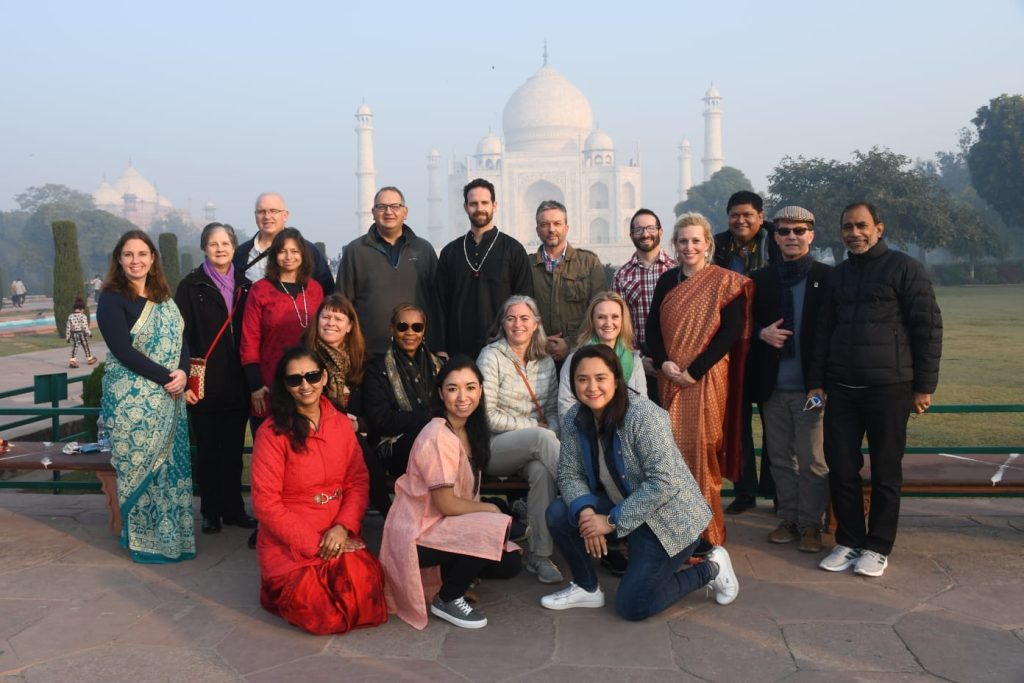When learning about international businesses, not everyone gets to experience the on-the-ground reality of what is happening in a particular economy.
But thanks to Temple’s Center for International Business Education and Research (CIBER), one faculty member had the chance to see how a high-growth economy changes over a decade.
Bertrand Guillotin, associate professor of management at the Fox School and academic director of the International Business program, traveled to India in 2021, sponsored by CIBER, to learn valuable insights about business, culture and economics in the country.
“Disruptions, whether in technology or social or political, are all too common today,” says Guillotin. “As a research professor, my purpose on this trip was to understand and differentiate conventional wisdom (from the research we conduct) from real wisdom (based on experiences being in the field).”
Guillotin was part of a Faculty Development in International Business (FDIB) Program in India run by CIBER departments from Florida International University and Brigham Young University. The program was titled “Navigating Business in a High Growth Emerging Market—The Post-COVID Era.”
Guillotin was able to compare his 2021 trip to his previous visit in 2009 to study the impacts of the global recession on India. More recently, he focused on trying to understand the impact of the latest disruption in the world: the COVID 19 pandemic.
“There was so much to learn from India, just from observing and listening,” says Guillotin.
Guillotin explains that between 2009 and 2021, Indian businesses had gone through a tremendous amount of change in terms of processes and the way business was conducted.
“It was also interesting to me that even if things looked like they hadn’t changed in the last 10 years, there were changes beyond the surface that one wouldn’t notice unless they have been in the country several times,” says Guillotin.
The trip was centered around learning about the measures the Indian Government had taken to support local businesses as they tried to recover from the impact of COVID.
“India is a top 10 nation in terms of gross domestic product (GDP) and has an economy of around $3 trillion,” says Guillotin. “The government has done a tremendous job when it comes to infrastructure and advancement.”
Twelve years ago, when Guillotin first visited India, he says electric cables were hanging everywhere in big cities. Now these same cities have 4G internet access and much better infrastructure to support technological advancements.
“We visited a myriad of places, from big cities like Jaipur and New Delhi, to small villages near these metropolises. And there was a lot of investment buzzing around everywhere,” says Guillotin.
He explains that economists are cautiously optimistic when they forecast a $5 trillion growth for India. The reason for their caution is the country has a very big population and a lot of bureaucracy.
“Certain trends associated with the planning are very cumbersome, especially the interaction between the central government and the states,” notes Guillotin.
Because of all of these factors and the presence of fewer resources, Guillotin suggests that Indian industries have to be very nimble when it comes to satisfying demand.
“When you see such a populous country coming up with new innovative ideas to supply demand with limited resources, it makes you feel energized,” says Guillotin. “I had a new perspective on the world and the motivation to take on new initiatives.”
Another thing that concerns Guillotin is the dominance of the newly elected government in India. The new government has sparked a debate about nationalization and the stance of globalization in light of promoting Indian-only businesses.
“If one of the biggest economies in the world starts pulling out of globalization, that is not good for the people of that country and is certainly not good for the global economy,” warns Guillotin.
In addition to understanding economics and business in India, Guillotin says that he had an opportunity to visit famous historical sights and learn their dynamic history as well.
“I expanded my knowledge of so many different things about India, from the Muslim invasion and its influence on current architecture to the complex relationship between India and Pakistan after the British invasion and the World War era,” says Guiolltin.
Guillotin’s trip lasted two weeks and he still felt that it wasn’t long enough to see all of India.
“Anybody interested in understanding diversity inclusion, economic sustainability and innovation should take a trip to India, because you get to these core concepts in practice,” he concludes.
